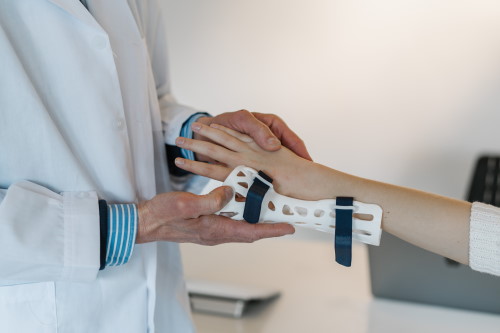The doctors who address your musculoskeletal system—including those achy joints—have a unique lens on the human body. Here's what catches their eye first.
Orthopedic doctors are trained to spot tell-tale signs of bone and joint issues that, if you’re a patient, you may have been living with so long that you don’t even notice them anymore. Starting from the way you walk from the waiting room to the exam room, orthopedic doctors know the smallest details could be indicators of your orthopedic health.
BREAKING: Get Rid of Your Glucosamine: Revolutionary Compounds Offer Hope for Faster Joint Relief
Here are seven initial observations with insight from top orthopedic doctors.
1. Your overall physical condition
An orthopedic doctor’s observations go beyond the surface. In their eyes, your weight and muscle tone serve as barometers for your overall health. Excess weight can stress your joints and muscles, while inadequate muscle tone could mean you’re not getting enough exercise, which might jeopardize joint health.
Michael L. Parks, MD, an attending surgeon at the Hospital for Special Surgery in New York, elaborated in a 2019 op-ed for the American Academy of Orthopaedic Surgeons (AAOS): “It is common for me to see patients who complain of significant limitation from painful arthritic hips or knees.” Dr. Parks added: “A significant proportion of patients I see are also obese.” This creates a distressing cycle where painful joints and excess weight combine to limit mobility.
As orthopedic specialists, their mission is to restore patient mobility. Both joint replacement procedures and non-surgical arthritis therapies have demonstrated exceptional success in achieving this goal.
2. The way you walk
Think your unique strut is just a style statement? It can actually reveal a lot about your musculoskeletal health. Your stride tells a tale that the orthopedic doctor is keen to read. An unusual gait could hint at ailments such as hip dysplasia or knee osteoarthritis.
3. The silent language of discomfort
Words are not the only way to express pain. An orthopedic specialist reads your non-verbal cues: a wince, a gritted jaw, or a protective posture. They are trained to decipher these subtle languages of discomfort. Silent yet expressive, these signs guide the doctor to your pain points, even if you don’t mention them.
4. Testing your moves
Ever had someone watch you bend, stretch, or twist? Orthopedic doctors do just that to gauge your joint flexibility and muscle strength. Struggles with such movements might suggest conditions like arthritis or tendonitis.
As Gregory G. Caronis, MD, FAAOS, an orthopaedic surgeon in Illinois, mentions in an op-ed for the AAOS: “Osteoarthritis is one of the leading causes of disability in people over the age of 55. I tell my patients to stay active because exercise strengthens the joints and the surrounding muscles. It helps to reduce stiffness and associated pain.”
5. Redness and swelling
Inflamed or swollen joints serve as red flags, alerting your doctor to possible issues like a sprained ankle, a torn ligament, or an infected joint. These signs are your body’s silent SOS—its innate wisdom initiating the healing process.
6. Traces of the past
Your body carries imprints of your past, and orthopedic doctors can read these traces. Surgical scars or noticeable deformities could be chapters from your medical history, affecting your current health narrative. Your past injuries or surgeries can offer valuable insights to your doctor.
Frederick M. Azar, MD, an orthopaedic surgeon in Tennessee, explains via AAOS how some injuries leave distinct trademarks, like the “popeye muscle,” caused by a biceps tendon rupture at the elbow.
7. Assisted movements
Do you use crutches, a cane, or a wheelchair? These assistive devices provide valuable information about the severity of your condition. Furthermore, if your device isn’t the right fit, it can exacerbate your issues. In their careful observation, an orthopedic doctor can help ensure you’re moving as comfortably and safely as possible.
TRENDING: Do This To Fix Nerve Pain Within A Matter of Days
Remember, these initial observations are only the tip of the iceberg in understanding your overall orthopedic health. Regular check-ups, preventive care, and open dialogue with your orthopedic specialist are important to maintaining your musculoskeletal well-being. While it’s tempting to self-diagnose, use this newfound knowledge to foster informed discussions about your orthopedic health instead.








